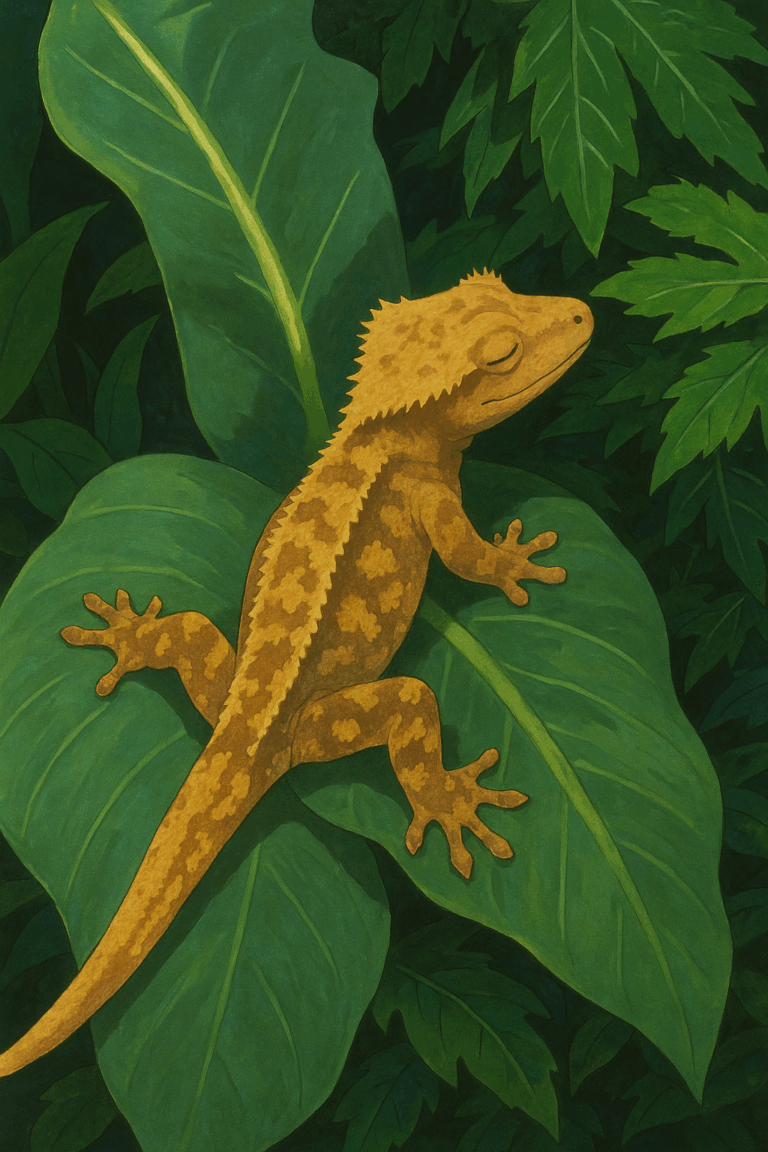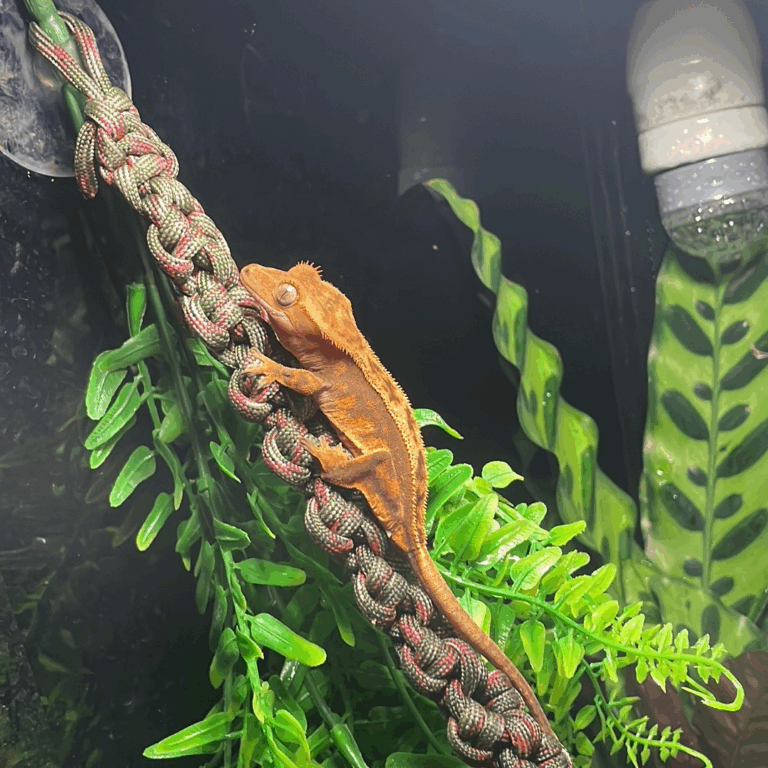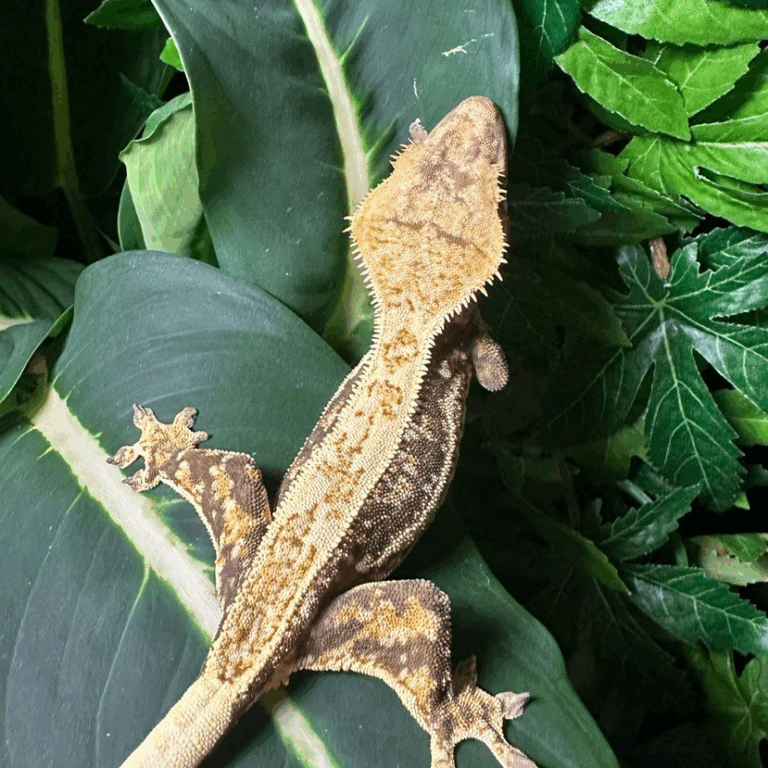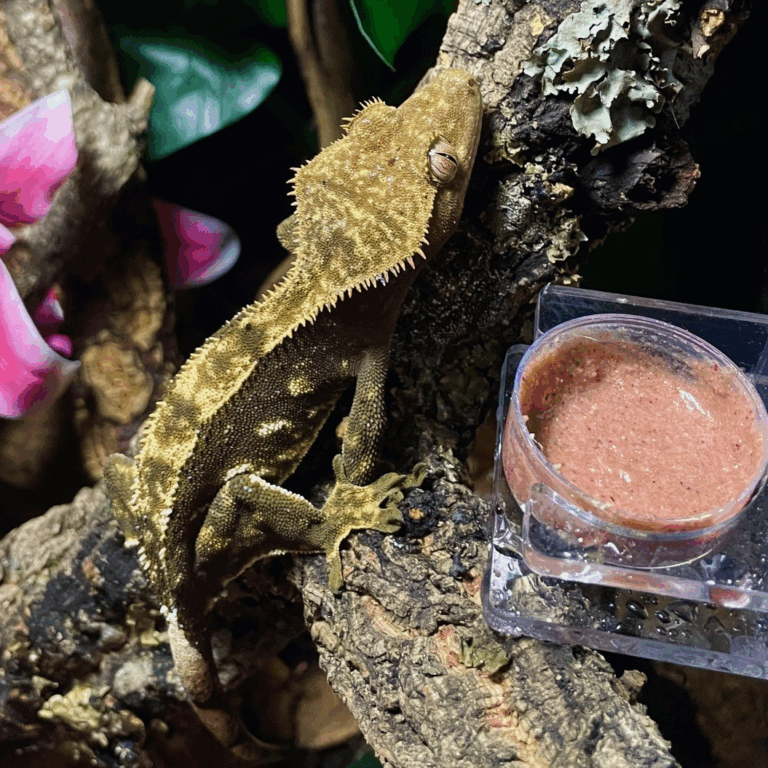
🌿 Native to New Caledonia in the South Pacific
🚫 Can drop their tail when scared (doesn’t grow back)
👅 Have no eyelids — they lick their eyes to keep them clean and moisturized
🧗 Sticky toe pads and tail allow them to climb smooth surfaces
🍓 Love fruit-based diets more than live insects
🌙 Nocturnal — active at night, sleep during the day
🎨 Come in many colors and patterns (morphs), like harlequin and lilly white
The crested gecko, also known as the eyelash gecko, originates from New Caledonia, a group of islands in the South Pacific. It is one of the most popular pet reptiles due to its easy care, calm temperament, and nocturnal habits. Its name comes from the “crests” or skin fringes that run from the eyes down the back, resembling eyelashes. Crested geckos grow up to about 10 inches (25 cm) and can live for 15 to 20 years with proper care.
Crested geckos have a soft, velvety skin and come in a wide variety of colors and patterns (called morphs). A notable feature is their prehensile tail and sticky toe pads that allow them to climb smooth surfaces. If threatened, they can drop their tail (a process called autotomy) — however, it does not grow back.
Size: A single gecko requires a terrarium of at least 18 x 18 x 24 inches (45 x 45 x 60 cm). For groups (only one male with multiple females), a larger enclosure is needed.
Setup: Provide a vertical layout with plenty of climbing structures like branches, cork tubes, and foliage (live or artificial). The substrate should retain humidity well — coconut fiber, organic soil, or peat moss work well.
Temperature: Maintain daytime temperatures between 72–79°F (22–26°C), and allow a drop at night to 64–72°F (18–22°C). Avoid temperatures above 82°F (28°C).
Humidity: Maintain 60–80% humidity with daily misting (morning and evening). Proper ventilation is essential to prevent mold.
Lighting: UVB is recommended, a day/night cycle of 10–12 hours of light is important. Soft lighting (e.g., LED or fluorescent) also helps support plant growth.
Food: Crested geckos are omnivores. They eat specially formulated fruit-based gecko diets (in powder form, mixed with water) and should occasionally be offered live insects such as crickets, roaches, or locusts. Insects should always be dusted with calcium and vitamin supplements.
Water: They primarily drink droplets from leaves and surfaces after misting. A shallow water dish can also be provided.
Crested geckos do well alone and do not require companions. If housed in groups, keep only one male per enclosure to prevent fighting.
They are crepuscular to nocturnal and tend to be shy. Frequent handling can cause stress and should be kept minimal.
Shedding is usually trouble-free, but retained skin (especially on toes and tail) can occur if humidity is too low.



